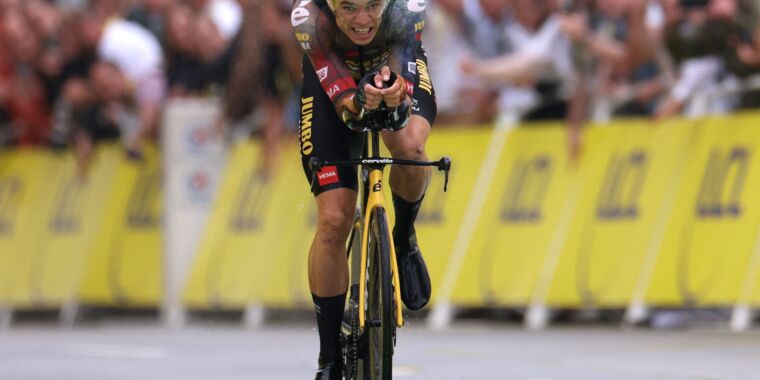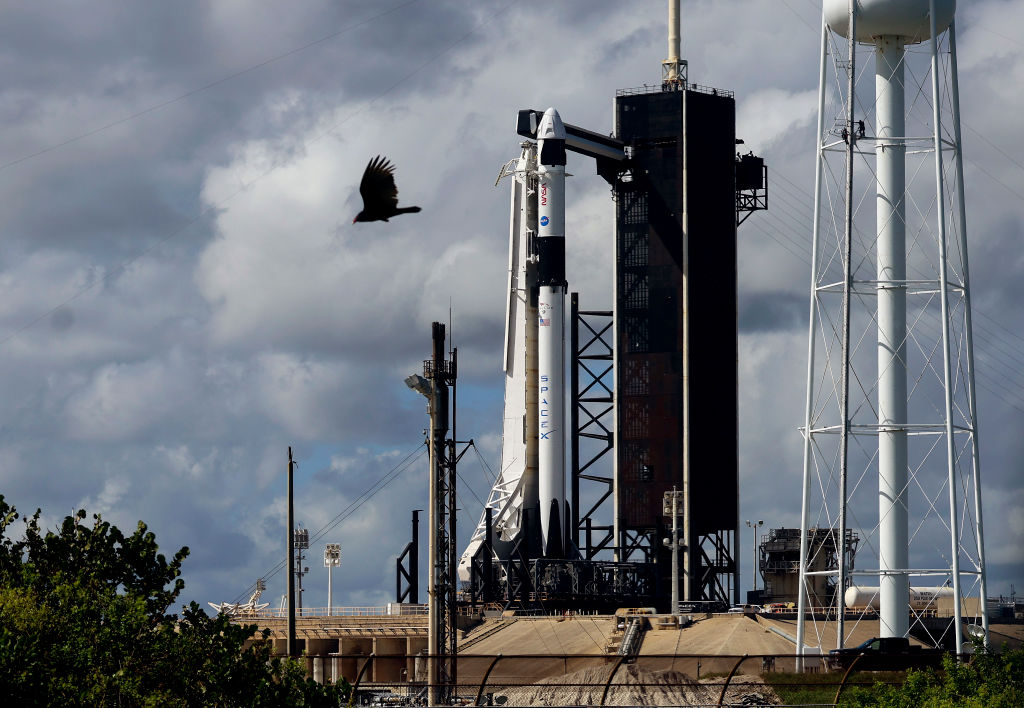How many calories will the Tour de France winner burn?
![Belgian Jumbo-Visma team rider Wout Van Aert , pedal to the finish line during the first stage of the 109th edition of the Tour de France cycling race in Copenhagen, Denmark on July 1, 2022. the 109th edition of the Tour de France cycling race in Copenhagen, Denmark Denmark, July 1, 2022.
Thomas Samson/Getty
<p>Imagine starting pedaling at the start of stage 12 of this year's Tour de France. Your very first task would be to hike approximately 20.6 miles (33.2 km) to the top of the Col du Galibier in the French Alps while gaining approximately 4,281 feet (1,305 m) in elevation. But this is only the first of three big climbs of your day. You then face the summit of the Col de la Croix de Fer and finish the 165.1 km stage by tackling the famous climb of Alpe d'Huez with its 21 winding turns.</p>
<p>On the fittest day of my life, I may not even be able to complete stage 12, let alone do it in close to the approximately five hours the winner will take to complete the ride. And stage 12 is just one of 21 stages that must be completed within the 24 days of the tour.</p>
<p>I am a sports physicist and have modeled the Tour de France for almost two decades using terrain data - like what I described for stage 12 - and the laws of physics. But I still can't imagine the physical abilities needed to complete the world's most famous bike race. Only a few elite humans are able to complete a Tour de France stage in a time measured in hours instead of days. The reason they are able to do what we can only dream of is that these athletes can produce tremendous amounts of power. Horsepower is the rate at which cyclists burn energy, and the energy they burn comes from the food they eat. And on the Tour de France route, the winning cyclist will burn the equivalent of around 210 Big Macs.</p>
<p>[embedded content]</p>
Cycling is a game of watts
<p>To make a bike move, a Tour de France rider transfers energy from his muscles, through the bike and to the wheels that push back on the ground. The faster a cyclist can produce energy, the greater the power. This rate of energy transfer is often measured in watts. Tour de France cyclists are able to generate enormous amounts of energy for incredibly long periods of time compared to most people.</p>
<p>For about 20 minutes, a fit recreational rider can consistently produce 250 watts to 300 watts. Tour de France cyclists can produce over 400 watts during the same period. These pros are even capable of hitting 1,000 watts for short periods on a steep climb—about enough power to run a microwave oven.</p>
<p>But not all the energy a Tour de France cyclist puts into their bike is transformed into forward motion. Cyclists struggle with air resistance and friction losses between their wheels and the road. They get help from gravity on the descents, but they have to fight against gravity on the way up.</p>
<p>I incorporate all the physics associated with rider power output as well as the effects of gravity, air resistance and friction into my model. Using all of that, I estimate that a typical Tour de F...</h2></div>
<div class=](https://cdn.arstechnica.net/wp-content/uploads/2022/07/GettyImages-1241646982-800x551.jpg) Technology
Jul 4, 2022
0
51
Add to Reading List
Technology
Jul 4, 2022
0
51
Add to Reading List

![Belgian Jumbo-Visma team rider Wout Van Aert , pedal to the finish line during the first stage of the 109th edition of the Tour de France cycling race in Copenhagen, Denmark on July 1, 2022. the 109th edition of the Tour de France cycling race in Copenhagen, Denmark Denmark, July 1, 2022.
Thomas Samson/Getty
<p>Imagine starting pedaling at the start of stage 12 of this year's Tour de France. Your very first task would be to hike approximately 20.6 miles (33.2 km) to the top of the Col du Galibier in the French Alps while gaining approximately 4,281 feet (1,305 m) in elevation. But this is only the first of three big climbs of your day. You then face the summit of the Col de la Croix de Fer and finish the 165.1 km stage by tackling the famous climb of Alpe d'Huez with its 21 winding turns.</p>
<p>On the fittest day of my life, I may not even be able to complete stage 12, let alone do it in close to the approximately five hours the winner will take to complete the ride. And stage 12 is just one of 21 stages that must be completed within the 24 days of the tour.</p>
<p>I am a sports physicist and have modeled the Tour de France for almost two decades using terrain data - like what I described for stage 12 - and the laws of physics. But I still can't imagine the physical abilities needed to complete the world's most famous bike race. Only a few elite humans are able to complete a Tour de France stage in a time measured in hours instead of days. The reason they are able to do what we can only dream of is that these athletes can produce tremendous amounts of power. Horsepower is the rate at which cyclists burn energy, and the energy they burn comes from the food they eat. And on the Tour de France route, the winning cyclist will burn the equivalent of around 210 Big Macs.</p>
<p>[embedded content]</p>
Cycling is a game of watts
<p>To make a bike move, a Tour de France rider transfers energy from his muscles, through the bike and to the wheels that push back on the ground. The faster a cyclist can produce energy, the greater the power. This rate of energy transfer is often measured in watts. Tour de France cyclists are able to generate enormous amounts of energy for incredibly long periods of time compared to most people.</p>
<p>For about 20 minutes, a fit recreational rider can consistently produce 250 watts to 300 watts. Tour de France cyclists can produce over 400 watts during the same period. These pros are even capable of hitting 1,000 watts for short periods on a steep climb—about enough power to run a microwave oven.</p>
<p>But not all the energy a Tour de France cyclist puts into their bike is transformed into forward motion. Cyclists struggle with air resistance and friction losses between their wheels and the road. They get help from gravity on the descents, but they have to fight against gravity on the way up.</p>
<p>I incorporate all the physics associated with rider power output as well as the effects of gravity, air resistance and friction into my model. Using all of that, I estimate that a typical Tour de F...
</div>
<div class=](https://cdn.arstechnica.net/wp-content/uploads/2022/07/GettyImages-1241646982-800x551.jpg)
What's Your Reaction?






















